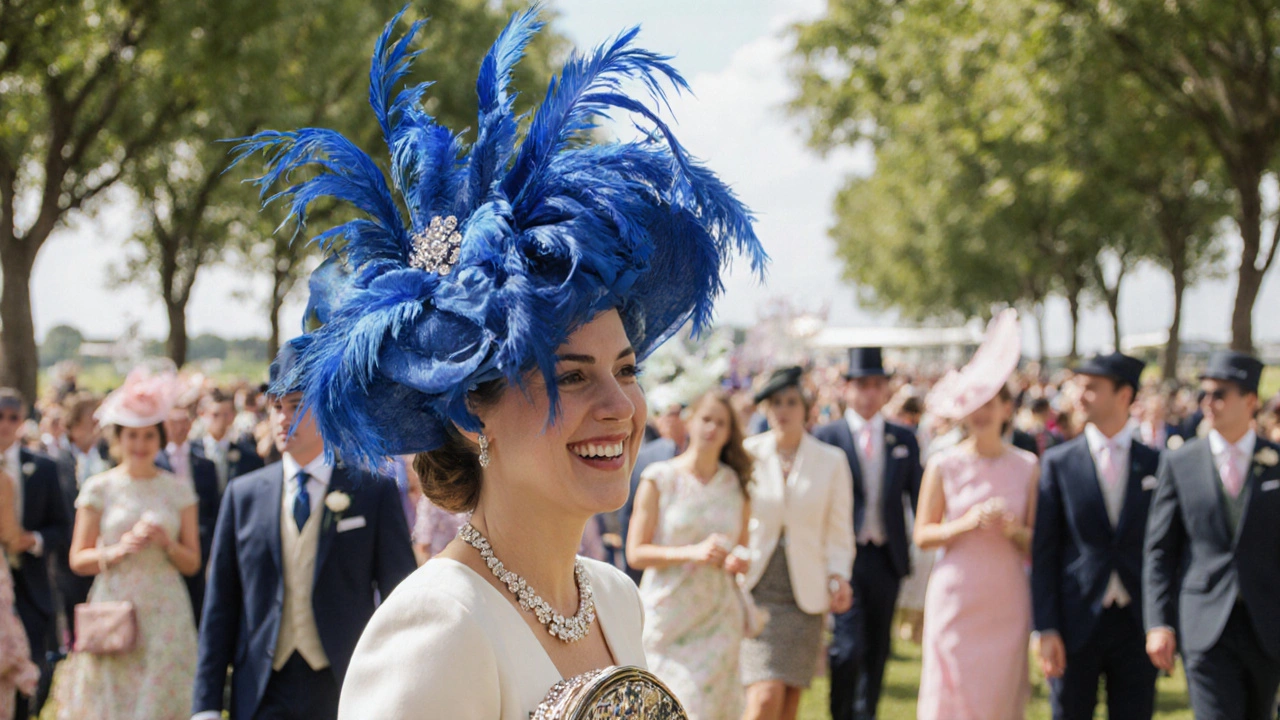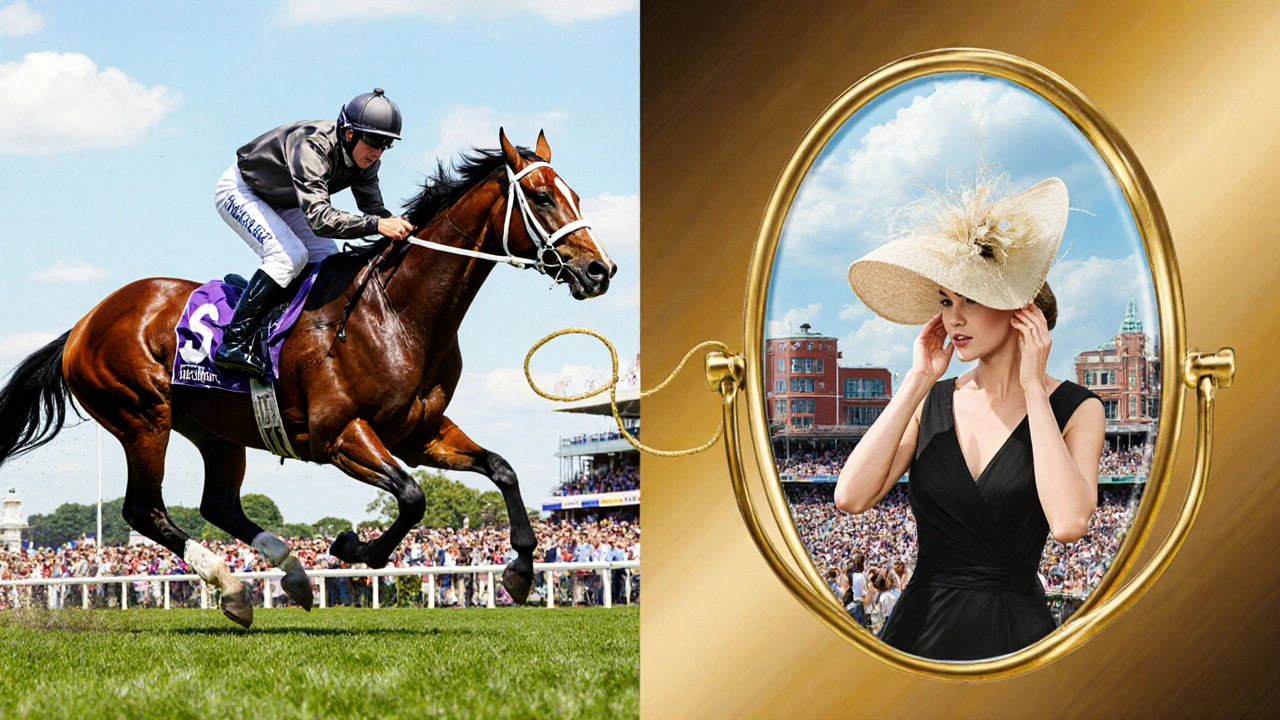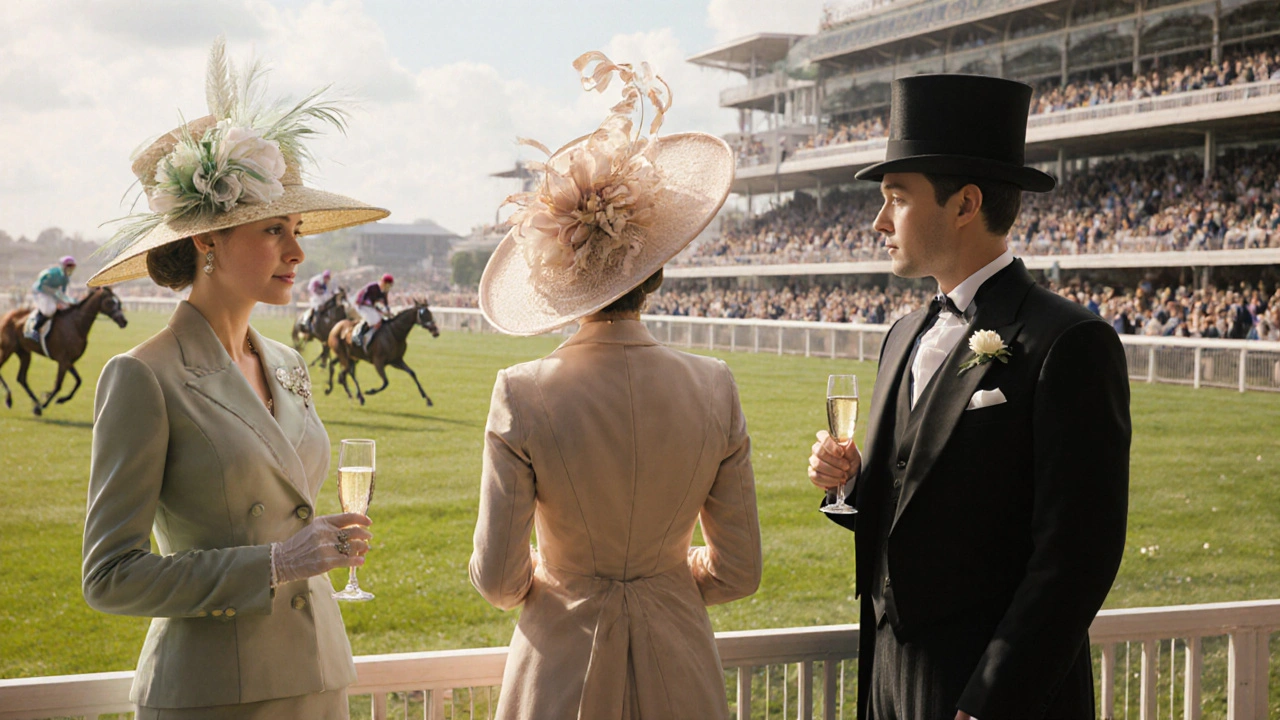Every June, when the sun hangs just right over the Berkshire hills, a quiet corner of England turns into the most glamorous spectacle in British sport. Royal Ascot isn’t just a horse race. It’s a day where tradition, speed, and style collide in a way no other event in the UK does. You’ve seen the hats-towering, feathered, sometimes absurdly elaborate. You’ve seen the tailored suits, the silk scarves, the gloves pulled tight. But if you think it’s all about fashion, you’re missing the real heartbeat: the thunder of hooves, the scent of turf, and the quiet intensity of a 200-year-old ritual that still draws royalty, billionaires, and everyday fans in equal measure.
What Makes Royal Ascot Different From Other Races?
There are over 60 racecourses in the UK. Royal Ascot is the only one that requires a dress code enforced by stewards with clipboards. It’s the only one where the Queen (or now, the King) attends every day. And it’s the only one where the prize money for a single race can hit £1 million-and still feel like a side note.
The event runs for five days, with each day having its own character. Tuesday is the opening day, packed with the most formal attire and the Queen Anne Stakes, the first Group 1 race of the meet. Wednesday brings the Gold Cup, a 2.5-mile test of endurance that’s been run since 1807. Thursday is Ladies’ Day-the day fashion truly explodes. Friday closes with the Ascot Gold Cup and the final chance to see the best horses in the world go head-to-head.
Unlike other races, Royal Ascot doesn’t let you just show up. You need a ticket. And not just any ticket. General admission gets you a view of the track from the outer lawn. But the real experience? That’s in the Royal Enclosure. Only those with a pass-usually invited by a member or through a strict application process-can enter. Inside, men must wear morning suits with top hats. Women need dresses that cover the shoulders and go below the knee. Hats? Mandatory. No exceptions. Even the staff checking your outfit won’t let you in if your hat is too small.
The Fashion: Where Tradition Meets Couture
Forget the Oscars. Royal Ascot is the only event where fashion is policed by etiquette, not designers. The Royal Enclosure dress code isn’t a suggestion-it’s a rulebook. The hats? They can’t be smaller than 4 inches in diameter. No face-obscuring veils. No trousers for women. No flip-flops, ever.
And yet, within those rules, creativity thrives. Designers like Philip Treacy, who made the famous hat for the Duchess of Cambridge in 2011, have turned Ascot into a runway. Every year, milliners spend months crafting pieces that cost more than a car. One hat in 2024 reportedly cost £12,000. And people wear them to the races.
But it’s not all about price tags. The real magic happens in the crowd. You’ll see grandmothers in vintage 1950s hats, teenagers in bold neon headpieces, and men in bespoke tweed suits with pocket squares matching their ties. The fashion isn’t about showing off-it’s about belonging. It’s a language. And if you get it right, you don’t just look good. You feel like part of the story.
The Horses: Speed, Breeding, and Legacy
While the hats steal the headlines, the horses are why this event still matters. Royal Ascot hosts some of the most prestigious flat races in the world. The Queen Anne Stakes, the Prince of Wales’s Stakes, the King George V Stakes-these aren’t just races. They’re milestones for jockeys and trainers. Winning here can make a horse’s career. A horse that wins at Ascot can earn millions in breeding rights.
One of the most famous horses in modern racing, Frankel, won all 14 of his races-including the 2012 Queen Anne Stakes. He was so dominant, people called him “the perfect horse.” His owner, Prince Khalid Abdullah, still owns the stud where Frankel lives. Today, his descendants still race at Ascot.
Training for Ascot is intense. Horses arrive weeks early to acclimate to the track. The turf here is famously firm and fast. Unlike dirt tracks in the U.S., Ascot’s grass is cut to just 1.5 inches and watered daily. A horse that runs well on dirt might stumble here. That’s why only the best make the cut.
And then there’s the jockeys. They’re not just riders-they’re athletes. Most weigh under 115 pounds. They train like Olympians: daily rides, strict diets, yoga, and breathwork. One jockey told me in 2023 that he loses 7 pounds in a single race day just from sweat and dehydration. That’s why you see them sipping electrolytes between races. It’s not glamour. It’s grit.

How to Experience Royal Ascot Without a Royal Enclosure Pass
Not everyone can get into the Royal Enclosure. It’s not just about money-it’s about connections. But you don’t need a pass to feel the energy. The Silver Ring and the Village Enclosure are open to the public and just as lively.
In the Silver Ring, you’ll find families, friends, and first-timers. The dress code is relaxed. No hats required. You can bring your own picnic. Many people arrive with blankets, sandwiches, and bottles of Prosecco. The atmosphere is warm, friendly, and surprisingly festive. You’ll hear laughter, live jazz bands, and the occasional cheer when a long shot wins.
The Village Enclosure is where the younger crowd gathers. Think music stages, pop-up bars, and food trucks serving gourmet burgers and lobster rolls. It’s less about tradition and more about fun. But don’t be fooled-it still has the same electric buzz. The races are broadcast on giant screens. You’ll still feel the crowd rise as the horses round the final bend.
And if you can’t make it in person? The BBC broadcasts every race live. Thousands tune in from across the UK and beyond. You can even follow the fashion trends on Instagram-#RoyalAscot gets over 2 million posts every year.
What to Eat, Drink, and Do
At Royal Ascot, food is part of the ritual. The Royal Enclosure has its own Michelin-starred chefs serving smoked salmon blinis, truffle eggs, and champagne cocktails. But you don’t need to spend £200 to eat well.
In the Silver Ring, try the traditional British sausage roll from the local vendor-it’s been the same recipe since 1989. Or grab a pint of real ale from the on-site brewery. For something sweet, the sticky toffee pudding is legendary. It’s served warm, with a scoop of clotted cream, and it’s the only dessert that makes grown men cry.
And while you’re there, take a walk around the grounds. The Ascot racecourse is beautiful. The grandstand, built in 1839, still stands. The royal boxes are visible from afar. You’ll see people taking photos with the famous Ascot clock. And if you’re lucky, you might spot a member of the royal family waving from their box.

When to Go and How to Plan
Royal Ascot runs from Tuesday to Saturday in mid-June. In 2025, it’s June 17-21. Tickets go on sale in January, and they sell out fast. General admission starts at £25. The Silver Ring is £50. Royal Enclosure passes start at £250 and are often reserved months in advance.
Plan ahead. Book your train early-London Paddington to Ascot takes 35 minutes. The last train leaves at 11:30 PM. Wear comfortable shoes. You’ll walk miles. Bring sunscreen. And if you’re going for fashion, test your hat before you go. Nothing ruins a day like a hat that falls off mid-race.
Why It Still Matters in 2025
Some say horse racing is dying. That it’s old-fashioned. That no one under 30 cares. But Royal Ascot proves otherwise. In 2024, 30% of ticket buyers were under 35. Social media has made it more popular than ever. TikTok trends feature hat challenges. YouTube channels break down race strategies. Even non-racing fans come for the spectacle.
It’s not just about horses or hats. It’s about continuity. About a nation that still knows how to dress up, show up, and celebrate something beautiful-even if it’s just for five days a year.
Do I need a hat to go to Royal Ascot?
Yes-if you’re entering the Royal Enclosure. Women must wear a hat that’s at least 4 inches in diameter and not obstruct the view of others. In the Silver Ring and Village Enclosure, hats aren’t required, but they’re still common. Many people wear them because it’s part of the fun.
Can I wear pants to Royal Ascot?
No, not in the Royal Enclosure. Women must wear dresses or skirts that cover the knees. Trousers are not allowed. In the Silver Ring and Village Enclosure, smart trousers are acceptable, but most still choose dresses for the occasion.
How much does it cost to attend Royal Ascot?
General admission starts at £25. The Silver Ring costs £50. Royal Enclosure tickets start at £250 and can go up to £400 depending on the day. Train tickets from London add another £15-£30. Food and drinks can cost £10-£30 per item, so budget accordingly.
Is Royal Ascot family-friendly?
Yes, but with limits. Children under 16 get free entry in the Silver Ring and Village Enclosure. The Royal Enclosure is not recommended for young kids due to the strict dress code and formal atmosphere. Families often choose the Silver Ring for a more relaxed experience.
Can I buy Royal Ascot tickets on the day?
Rarely. Most tickets sell out weeks or months in advance. The only tickets available on the day are limited general admission passes, and even those are often gone by noon. Plan ahead and book through the official Royal Ascot website.
